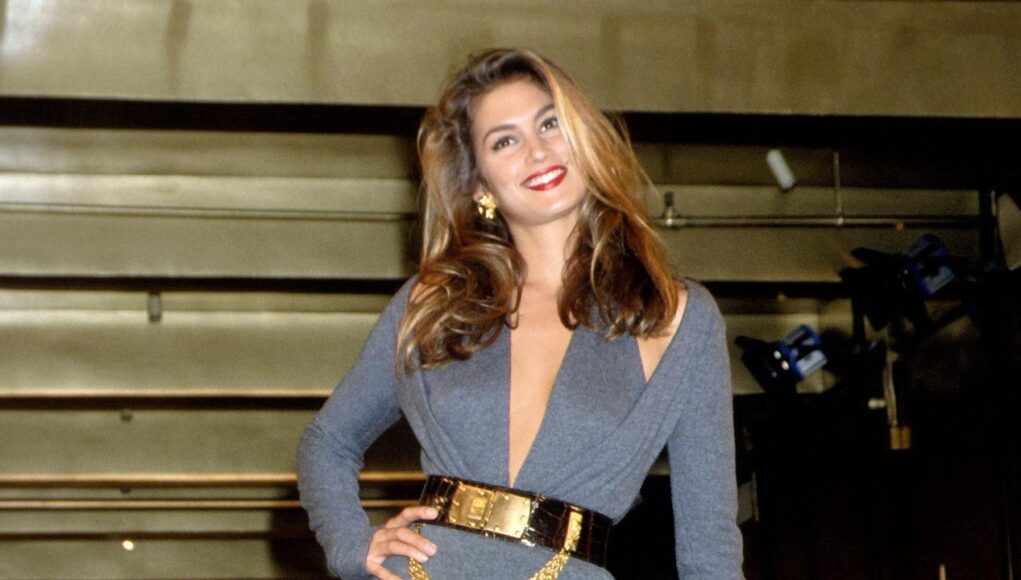Am I in my Donna-issance? By that, I do mean Donna Karan. I’m asking myself this every day as I look at my clothing rack, an erratic mélange of zebra button-downs, acid tie-dyed velvet pants, and logo T-shirts. Now I’m slowly selling this maximalist ’00s attire, and instead I’m looking for sleek, sexy, and powerful Donna Karan garb. I have the Queens-born-and-bred designer’s name saved on my eBay alerts and several pieces hovering in my shopping cart: a leather jacket with a killer fringe; a plunging cocktail dress that almost hits the navel; and a pinstripe suit with the buttons hidden. Each selection is understated but bold and fit for a woman cutting a deal. Most recently I have been eyeing a hulking black leather bomber with a little nipped waist and a huge hood. I can see myself now, sauntering through New York City, maybe down a dimly lit alleyway as steam rises from some street grate, 9 1/2 Weeks style. I’m bulletproof and almighty in that big bad Donna Karan jacket.
I’m not the only one searching for Donna. Marie Laboucarié of Nina Gabanna vintage has been collecting Karan’s designs (as well her DKNY creations) alongside her Roberto Cavalli and Stella McCartney–era finds because “she incarnates the image of elegance in fashion in NYC in the ’90s.” Brandon Giordano, the coowner of the Chinatown vintage store James Veloria, has been on the hunt. He’s been sending me pictures of his classic, solid-color Karan finds for the vintage store. Of course, there are the signatures that put Karan on the map: Kevlar-status leathers, classic bodysuits, and wrap skirts. But Karan is not without wild cards. Giordano found a sheer gown from spring 2002 with swirling boning at the skirt (“It creates a 3D silhouette) and a silk fringe dress in baby blue from spring 1999 (“It moves really beautifully”). “Those more complicated pieces were surprisingly easy to wear with stretch fabrics in all the right places,” says Giordano. Even those fancy things are made to be worn comfortably. According to Giordano, they can’t keep the designer’s pieces on the shelves. In fact, a perpetually paparazzi’d veteran model recently popped in to buy a few of Karan’s leather pieces.
There’s been a bit of that big-D moment beyond fashion. Consultant Mellany Sanchez texted me lyrics to Nicki Minaj’s brand new song, “Red Ruby Da Sleaze”: “We don’t be Karen like Donna-na, na-na-na-na”. On TikTok, hundreds of people are raving about Donna Karan Cashmere Mist. The deodorant is based on Karan’s popular Cashmere Mist Eau de Toilette that she launched in 1994, with notes of Moroccan jasmine and sandalwood. According to Google Trends, there’s also an uptick in searches for her perfume Chaos 1996, which was discontinued in 2002. (Used bottles, some containing a thimble worth of scent, are up for grabs on eBay for $150 upward.) If you are in your late 20s to mid-30s, you may remember your mother dousing herself in the fresh stuff at the time.
Born in Queens and raised in Long Island, Karan dropped out of Parsons School of Design to join Anne Klein’s design team in 1968. She went on to found her own label, Donna Karan New York, in 1984. The brand was known for balancing the masculine and feminine (a suit and a lace bra was a common reference) and for her Seven Easy Pieces. (It was initially five pieces and included staples like a bodysuit and an LBD.) She famously designed for herself and later tested it out. On the talk show Attitudes in 1992, she spoke about what she was wearing: a white jacket and a pair of jeans. “These are the absolute first pair of jeans that I ever made, and they were made on my body because I would not approve of the jeans until I made a size 12,” said Karan. That was often how she designed: guided by practicality and real women’s experiences. In fact, when she noticed her daughter, Gabby, was raiding her closet, she introduced a younger, more affordable line, DKNY, in 1989.
An August 1992 Vogue profile noted, “Karan’s professional rise has a lot to do with the current rise of ‘fortysomething’ female executives, like herself, who want to look put together not prim.” This is the same article that gave us a stellar Diane Sawyer quote that essentially defines the ethos of the New York house: “Karan’s clothes work on the go, because as globe-trotting Sawyer says, ‘she knows what it’s not like to have an hour in the morning to get dressed. It’s grab and run.’” Nowadays women in the professional space are entering positions of power younger and younger. It makes sense that women in their 30s are thirsting for pieces à la Donna.
The Y2K trend is not dying. Yet I find myself growing out of its flashiness, even though it felt like just yesterday I was scampering around town in sheer, animal-print Blumarine tops. Donna Karan is still emblematic of the aughts, but hers is a more pared-back version, along with the likes of Calvin Klein, Ralph Lauren, and fellow get-it-girl Norma Kamali. I’m finding that women like me are also venturing into the quieter section of the 2000s. Over Instagram, Sheila Imandoust, a vintage dealer, told me, “I’d say I’ve always loved it but started seeking it out more in the last year or two. The Y2K trends aren’t for me, and that’s fine. I had overplucked eyebrows and body dysmorphia like everyone else in 2002. I’ll take the Donna Karan route clear into my 40s.”
I aspire to have the lifestyle of the girls—no, wait, the women—in the Donna Karan ads. The women in the ’90s campaigns always seem to be doing something. In one campaign, the woman is clutching the arm of a guy with a dignified receding hairline. (She’s wearing a beret in the city and looks great. That’s an achievement in its own right.) One ad simply shows a woman in a killer wool coat with a briefcase and TheWall Street Journal tucked under her arm. (We know she’s en route to make some serious moola.) She even imagined then 34-year-old model Rosemary McGrotha as president, hand over bible and all (in a killer pinstripe pantsuit too!). Every situation was believable because the clothes were believable. We’ve all seen them being put to work in the city. There’s a power to a wardrobe that is actually lived in and not just conversation-making pieces that exist as flashy eye candy.
In an August 1992 Vogue profile that delved into Karan’s mile-a-minute life, she said, “I’ve never considered myself a fashion designer…. More a sort of doctor for women’s problems and how they can be solved. This business, in my vision, was never about hemlines. Clothes cannot be it all. It is about people and lifestyle and whatever that implies.” These basics—whether it was her famous Seven Easy Pieces or a pinstripe suit beloved by her friend Barbara Streisand—fill a gap in women’s wardrobes.
Maybe I am growing up. Maybe my love of Donna Karan is a departure from the freakdom of my younger years. But I like these current, more mature years: confident and cool. They are the chicest growing pains I’ve ever gone through. Like the Donna women, I want to live in my clothes and know that my leather jacket can take a beating. Giordano says it best: Even those basics manage to stand out from the flamboyant vintage pack. “Many of our customers love her pieces without even really knowing that much about the brand,” Giordano says. “I feel like people come into our store looking for cool avant-garde pieces from Gaultier or Comme des Garçons and end up going home with a really well-made ’90s leather DKNY trench or bomber.” And they’ll wear it forever.









